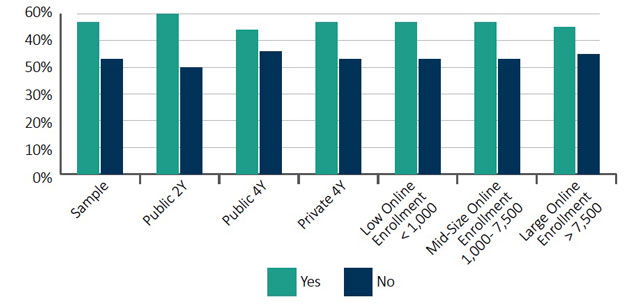When a recent survey asked higher education leaders if the pivot to remote learning during the COVID-19 pandemic changed their institution’s priorities, the majority of respondents (53 percent) said yes. That’s striking, the 2021 Changing Landscape of Online Education (CHLOE) report noted, for a sector that’s notoriously slow in its decision-making.
“Given the usual pace of change in higher education,” the report pointed out, “this seems a remarkably high proportion of institutions to be taking a serious look at their strategic priorities and identity at any particular time, attesting to the pervasive impact of the pandemic on the future of higher education.”
CHLOE is an annual survey of chief online officers about the structure and organization of online learning in United States higher education, conducted by Quality Matters and Eduventures Research. The 2021 survey polled representatives from 422 U.S. colleges and universities, drilling down into the impact of the pandemic on the future of online learning.
 Did the emergency remote pivot influence strategic priorities at your institution? Across all types of institutions, the majority of respondents said yes. Source: “The Changing Landscape of Online Education, 2021” from Quality Matters and Eduventures Research.
Did the emergency remote pivot influence strategic priorities at your institution? Across all types of institutions, the majority of respondents said yes. Source: “The Changing Landscape of Online Education, 2021” from Quality Matters and Eduventures Research.
That overall change in strategic priorities was consistent across all types of institutions (public, private, two-year, four-year) as well as institutions with varied involvement in online learning (low, mid-size or large online enrollment). In what areas did institutions change their focus? Top responses included:
- Expanding online course and program choices (cited by 33 percent of respondents);
- Recognizing and supporting online learning priorities and needs (24 percent)
- Increasing flexibility to meet student needs with multiple teaching modes (17 percent); and
- Applying quality standards to online courses, programs and services (9 percent).
Other areas mentioned by respondents included accessibility for all students, faculty training, improved technical infrastructure and expanded online student services.
“These strategic initiatives appear to augur a shift in institutional priorities toward the further integration of online learning into the mainstream of primarily campus-based institutions,” the report concluded, suggesting that we might see more blended learning as well as increased flexibility for students. Still, traditional models die hard: “We need to remind ourselves of the durability of traditional in-person learning in higher education,” the report cautioned. “We should not underestimate its ability to absorb the insights and key elements of new educational movements while remaining fundamentally unchanged …. While the pandemic experience with online learning will influence change across a wide swath of postsecondary institutions to the benefit of students, faculty, and institutions, it may still fall short of transformational change.”
The full report, which covers enrollment trends, attitudes toward online learning, ed tech usage, online learning quality assurance and more, is available for download on the Quality Matters site (registration required).
Source:https://campustechnology.com/

